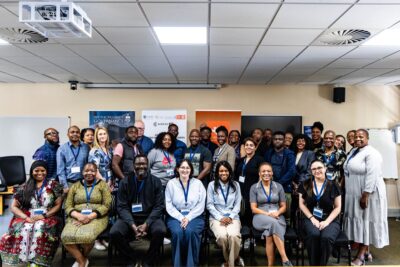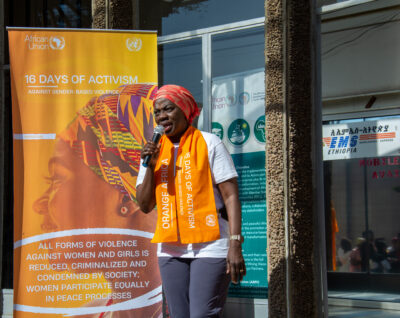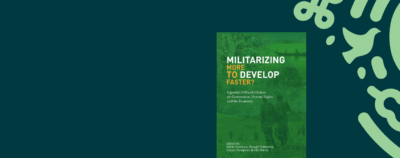These conversations were stimulating and inspiring. What follows is a deliberately undisciplined series of thoughts (see Henry Cowles and Caleb Smith here) evoked by the conversations.
The invitation to use Latour as our prompt for thinking about unresolved problems in science studies and religious studies comes with risks in my case since, once upon a time in a galaxy far away, I wrote a book about Afro-Brazilian Candomblé and, during the research for it, underwent the procedure of “making the god” (fazer santo) myself. In On the Modern Cult of the Factish Gods, Latour draws on Patricia Aquino’s ethnography to describe how the complex ritual process of “making the god” mirrors his notion of the “making” of scientific facts. What I would add is that “making the god” is also called “making one’s head” (fazer cabeça) and that the two phrases—“making the god” and “making one’s head”—are used almost interchangeably. The relatively free substitution of one for the other suggests how self-making and god-making, or self-making and fact-making, are inseparable.
Their mutual embeddedness is compactly expressed by the Yoruba term for the god-saint, orisa, which contains within it the noun for “head” (ori). Even more, the priestess who “made my head” and “made the god” referred to her temple as a factory (fábrica): a place of manufacture, which opens still other intriguing paths back toward the fetish/factish relation. In some ritual conditions and, according to Latour, in many scientific research scenarios too, the effacement of materials, tools, and procedures is important to create the effect of divine autonomy (or the scientific factish’s noncontingency). This phenomenon occurs through what Birgit Meyer calls “disappearing media.” But in the ritual tradition of making the god/making one’s head, the priestess was proud of her factory and fabrication. It was important to her, at least within a restricted social network, to show the work. In Candomblé, it is equally important to show that certain parts were kept secret, which generates the paradox of showing and concealing the work all at once; or, better, showing the work of concealment. I have called this labor “secretism.”
The other key thing to note is that the relative agency of this new hybrid god-head always remains uncertain after initiation. A god may take over or possess the initiate’s body such that a person’s identity disappears (or at least it is often experienced and described that way); at the same time, any instantiation of the god is always individually specific. João may be possessed by goddess Oxum but that iteration of the goddess Oxum will always be “João’s Oxum.” Its presence will be felt in relation to a series of all other known versions of Oxum, yet as also distinctive and unique. Who directs the expanded agency of this new ritual apparatus created by the simultaneous making of the god and making of the head? It depends. But the uncertainty by no means undoes its capacity—to the contrary. The agent-ambiguity of this fetish-factish only adds to its power. The issue of who or what is in control is not even that important in the ritual making of the social group; only presence, the fact(ish) that the god is there.
That may be more than you care to know about Candomblé, its gods, and its devotees—sometimes referred to by anthropologists, at least through 1940, as “fetish people”—but these added details further underscore Latour’s and many of these conversations’ emphases on the overlapping ways that “religion” and “science” configure the world, ourselves, and the uncertainty of agency, as a series of what Stephan Palmié might call “mangles.”
Robyn d’Avignon and Levi McLaughlin’s conversation raises the question of the universality of the science-religion distinction as a purified opposition, as well as what we could describe as its geographic lumpiness. Like them, I am not so sure that science and religion have everywhere been seen as so clearly set apart. In Africa’s and the African Americas’ historiography and ethnography, religion and science have often been presented as bound up together in interpretations of how communities face inchoate situations—whether of health, famine, fecundity, or, as in d’Avignon’s case, mining (and here it is worth noting the early invocations of “fetish-gold,” referring to gold of uncertain purity or interiority and potentially deliberately faked). E.E. Evans-Pritchard’s study of Azande witchcraft (mangu) remains the hinge, appearing as a kind of science-and-religion urtext.
But I’m also thinking of, say, Robin Horton’s descriptions, published in 1971 and 1975, of West African conversion to Islam and Christianity as expressive of a quasi-scientific response to emergent new needs for a macrosocial worldview (with more expansive forms of explanation, prediction, and control). Karen McCarthy Brown’s depiction of the Vodou priestess Mama Lola also comes to mind as someone who combines “the skill of a medical doctor, a psychotherapist, a social worker, and a priest.” Religion and science seem difficult to tease apart in African and Africa-inspired contexts—and in the literature written about them. Is this diagnostic of a lingering problem of primitivization in our geographies of theory-making, where Africa and its diaspora become key sites for working out theories of ritual practice in relation to science, rather than, say, deep-sea mapping, labor unions, or big data?
George Aumoithe and Ahmad Greene-Hayes’s lively exchange considers the ways Black religion has long been used as fertile ground for psychiatric speculation. They mention the continuing legal use of “excited delirium” as a foil to avoid accountability for violence against Black people. It gestures, among other things, to the long history of the attribution of permeable personhood, namely via “spirit possession,” as a unique African religious feature. I’m fascinated by “excited delirium” as a twenty-first century version of the psychiatric cum criminological classification coined in 1890s Brazil, “fetishist possession” or “fetishist animism,” which was invented by the psychiatrist and proto-anthropologist Raymundo Nina Rodrigues. (Similar phrases were deployed by Fernando Ortiz to describe Afro-Cuban religion a decade later in Los negros brujos.) In his hands, Black religion was even subject to laboratory study. Latour would have appreciated Nina Rodrigues’s 1890s experiments on the young female Candomblé initiate who he brought to his lab and hypnotized in order to study ritual trance. Talk about a medico-ritual mangle!
Such hybrids joined allegations of faulty ontologies of objects (fetishism) to the misrecognition of proper personhood (fetishist possession), allowing whites to raise questions in the post-slavery moment about Afro-Brazilians’ viability as free citizens. The links between descriptions of African misperceptions of things and the putative misrecognition of the agency of persons are clear in the medical literature. The two forms of alleged misrecognition were joined at the hip as partners in relegating many Afro-descendants to the twentieth century psychiatric asylum, even as they had previously converted them into enslaveable nearhumans in the factories of Elmina (São Jorge da Mina) and Cape Coast for four centuries, a genealogy I have worked out elsewhere.
There is also a temporal lumpiness in the history of the religion-science conversation about the social that is obvious but perhaps worth revisiting. Namely, how their separation is recent, a product of the early twentieth century refinement and reification of specific academic disciplines and their respective rules, as those rules were maintained and patrolled through careful boundary work in relation to one another. An obvious example from the history of religions canon is James Frazer, who argued that “sympathetic magic” and science rely on comparable principles of the uniformity and the stipulated reliability of nature. Magic, for Frazer, is science’s “next of kin” and “bastard sister.” Religion is further from science than magic, since it renders nature “elastic” through the idea of divine intervention, and so upsets the cart. Still, for most of the history of religions, Frazer claims, magic and religion remained indistinguishable. The idea of gods as miracle-making science disrupters only arrived as a late accretion. But we could equally point to figures like the Victorian thinker Herbert Spencer, who up until around the turn of the twentieth century published books on biology, sociology, philosophy, religion, and railroad mechanics in equal and absurdly prolix measure. If purified division of religion and science is just a century or so old, it makes the question of their relative separation or confluence at specific historical junctures a pressing question. Who decided these were separate domains, and why, and with what kinds of authority? The conversations here suggest an array of possible paths into the issue.
For, as these conversations make clear, science and religion aren’t separate social modalities at all, and nowhere less so than in the arena of medicine. No surprise then that eventually scholars like Ian Hacking, Charles Rosenberg and Annemarie Mol turned their anthropological gaze onto Western medical science, exploring the ways that classifications of otherwise complex, multi-faceted, and inchoate experiences and sensations in the body generate their own lived realities; that is, diagnoses as fetish-factishes. Rosenberg described illness as a combination of biological cues and a process of recognition and naming within an encompassing frame like “humoral balance,” “pathological anatomy,” or “germ theory.” In Rosenberg’s formulation, like Ian Hacking’s after him (writing on “multiple personality disorder”), categories of disease act as social actors and mediators. Just so for Mol, for whom “doing medicine” requires a whole array of actants. In one of her examples, the diagnosis of intermittent claudication—a circulation problem in the leg—requires a perceived pain, its articulation in words, a consultation, a doctor, a patient, a stairway, a dog that needs walking, the desk, a chair, a letter. Once the assemblage is converted into a diagnosis, it becomes a fetish-factish: It comes to life, shaping the patient’s capacities and limits, as well as the perceptions of those around her, creating new discursive networks. In that sense, medical diagnoses are both real and unreal at once—to echo a poignant phrase from Tanya Luhrmann and John Tresch’s conversation here.
This is true of the fetish as well. It is “real” as material and in its effects and real in its singularity—its refusal to be mastered as Sarah Hammerschlag proposes in her conversation with Taylor Moore. (Hammerschlag’s wonderful description of the resistance of the fetish to classification reminded me of James Clifford’s attempt to formulate a similar tactic.) If the fetish is ultimately about the materiality of power and about location—“a fixating encounter,” as William Pietz called it—it’s also about corporeal power. (Recall the British naval surgeon, John Atkins, who describes African women in Sierra Leone as “fetishing” their bodies.) Still, if the fetish was made in the factory of Portuguese Africa, it was made from already well-formed parts that were imported, imposed, and transcultured. I think this is an issue that has been insufficiently emphasized. It didn’t all start on the west coast of Africa. The story of the fetish, like the story of possession, was first a European Christian problem; after all, feitiçaria was a crime in Portugal since at least 1385. Europe’s cure for its maladies was to purify itself by projecting fetishism (and its sibling, spirit possession) abroad, among indigenous Americans and especially onto Africa. As feitiçaria became subject to greater institutional control in Europe (for example, as invoked in Inquisition and other legal forums), it was “found” everywhere else—a proto-scientific exorcism of expelling the demon from one body to chase it into the now-colonized and possessed body of the other.
I’m especially interested in the issues raised by Luhrmann and Tresch, and to some degree also by Webb Keane and Erika Milam, about ontologies, naming, and mutual intelligibility. Tresch brings up the “delicate production of the autonomy of religious beings” as comparable to the “careful production of the autonomy of scientific objects.” I find this a fruitful analogy. Concealment and purification are techniques applied in scientific and ritual events alike to remove the apparatus that generates presence and leave only the being. I suppose science and religion differ on their respective procedures of purification and the effacements or kind of useful forgetting they require—since, while we may wish for science and religion to equally “show their work,” the nature of data and of verification (by consensus, by expert review, by replicated experience, by statistical modeling, by big data) will surely differ.
As Palmié’s book argues, a strong-program ontological turn that denies any shared realities—whether between peoples or between disciplinary domains—is dubious because it ignores the many ways that science and religion (or master and enslaved) emerged from a shared historical stream, as overlapping and often convergent responses to shared ecologies, political economies, and sets of epistemes—though with vastly different powers at their disposal. He shows how Western scientific mangles and Afro-Cuban ritual assemblages can mutually illuminate each other when juxtaposed in principled comparisons—principled in the sense of comparisons made in relation to a stipulated, historically real third term, namely, for his work, a violent Atlantic modernity. This kind of muted humanistic optimism hangs not just on the old model of a shared human body and its capacities but also on the recreation of a partly shared historical situation from which both ritual complexes and Western scientific models were forged. I think this offers a promising methodological move. These conversations only further my hope.













